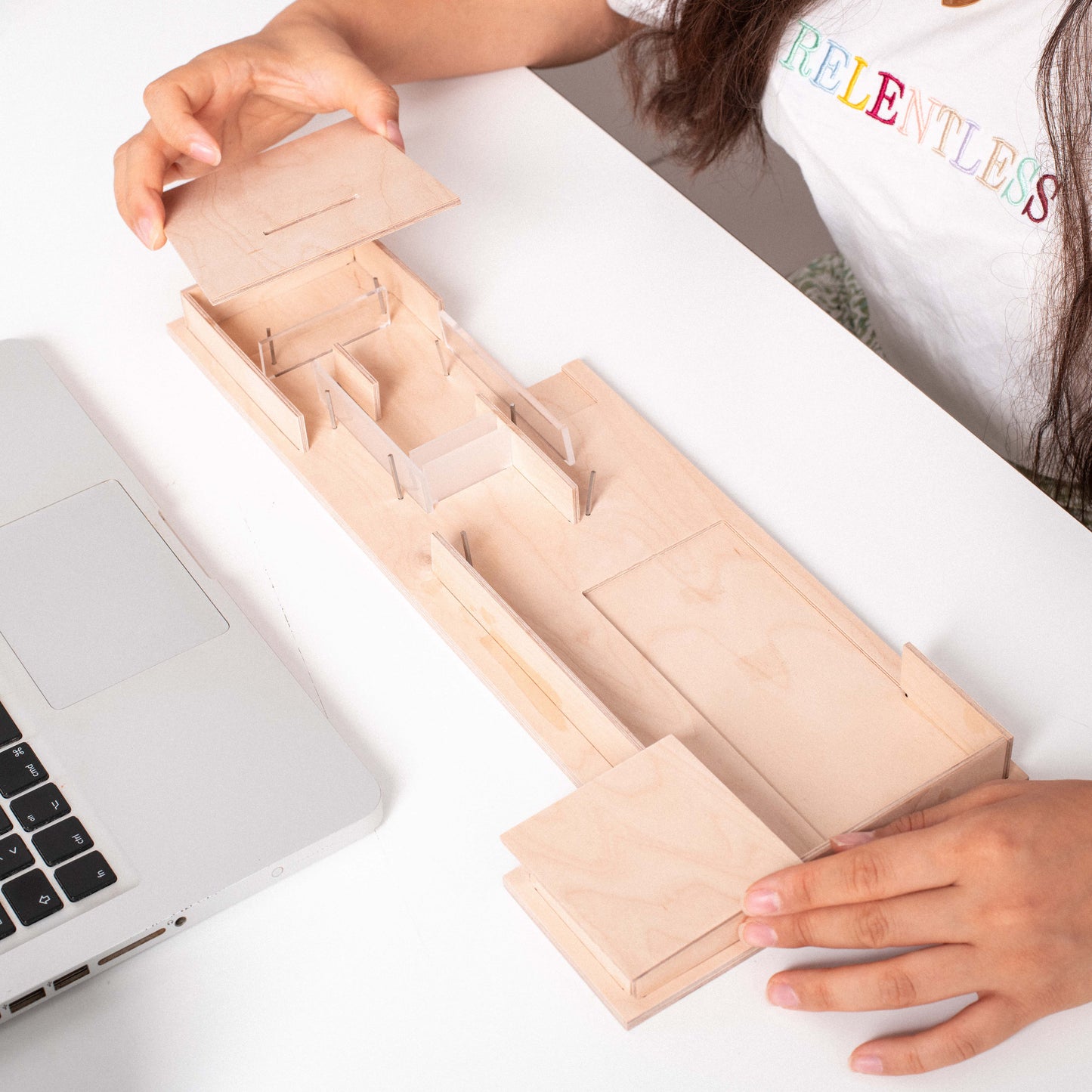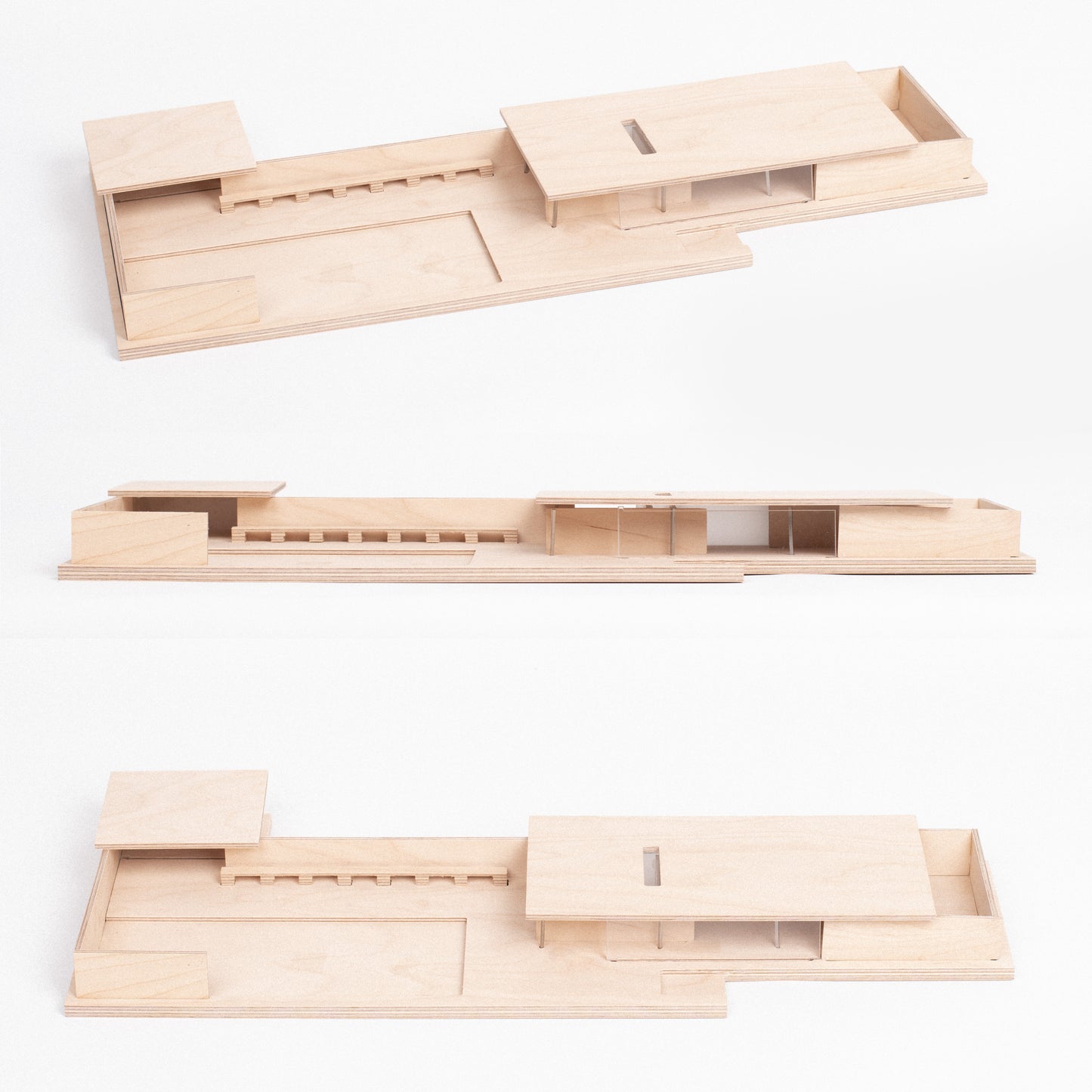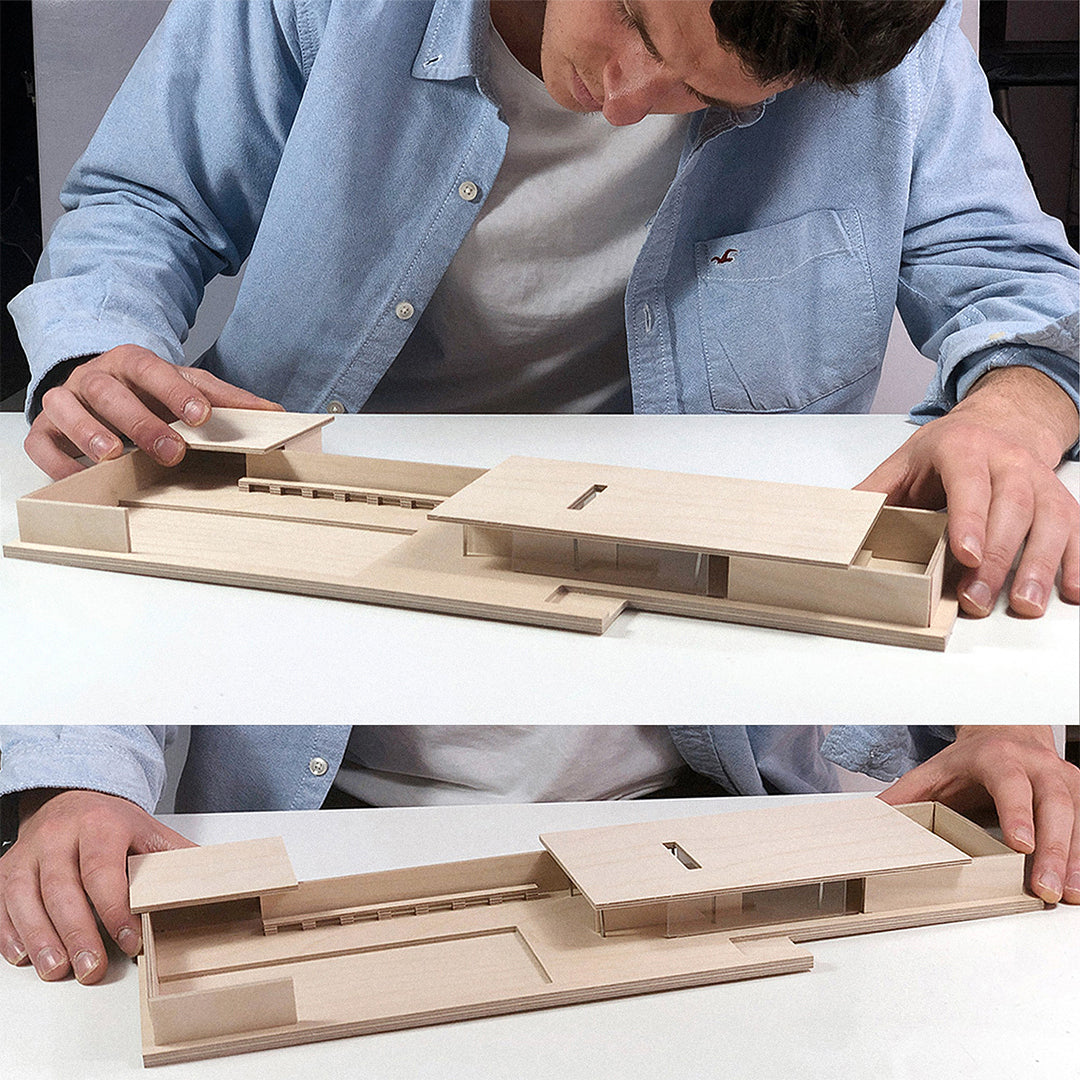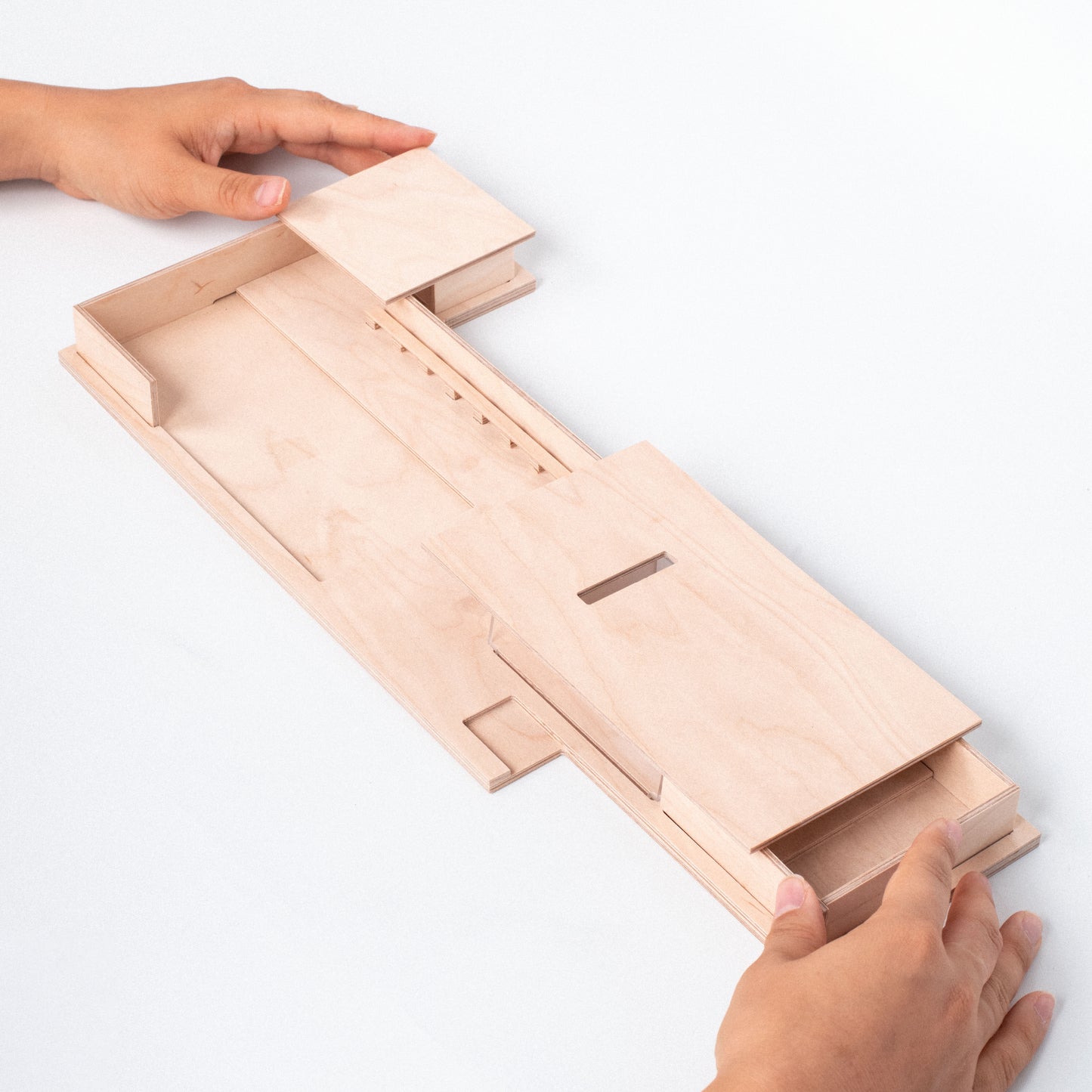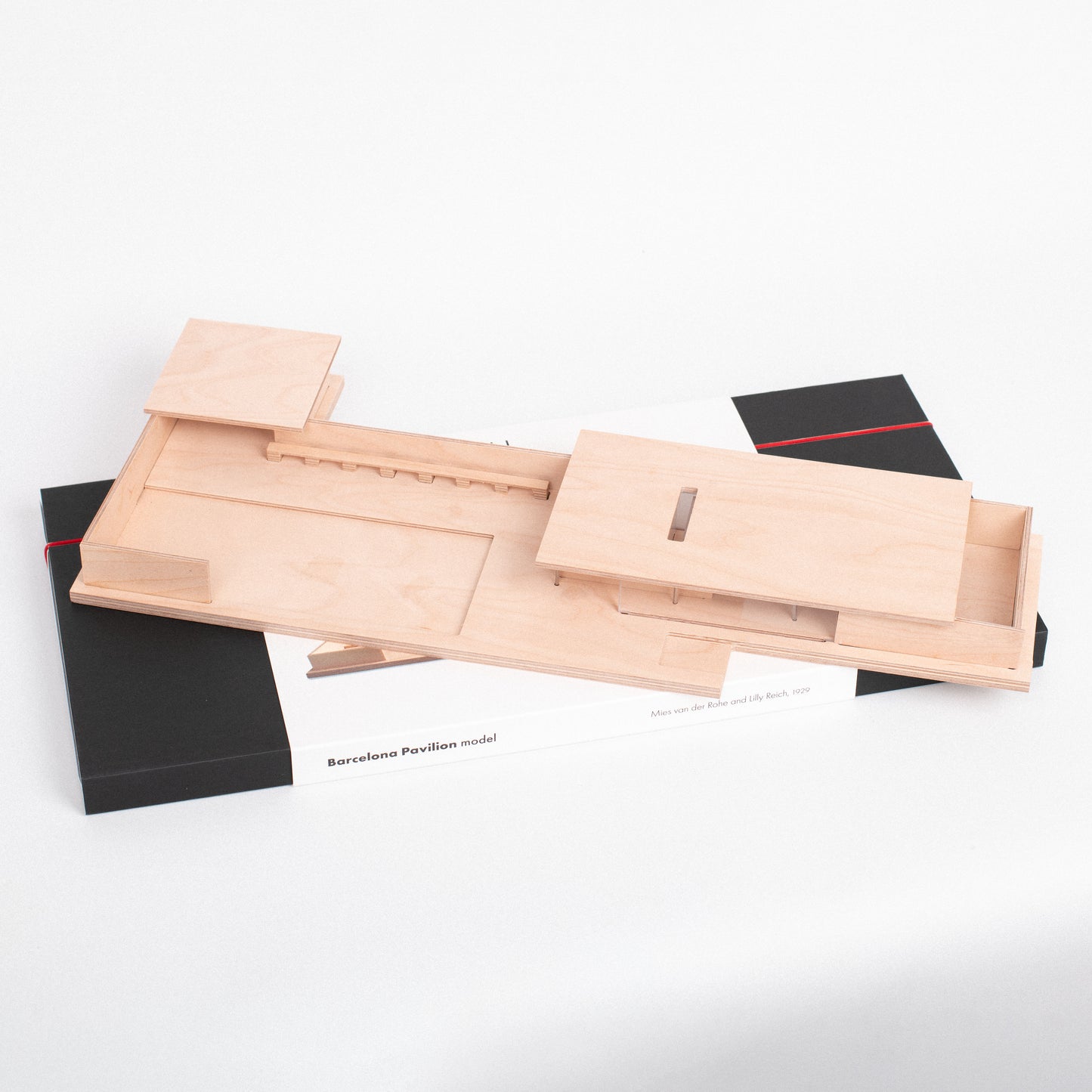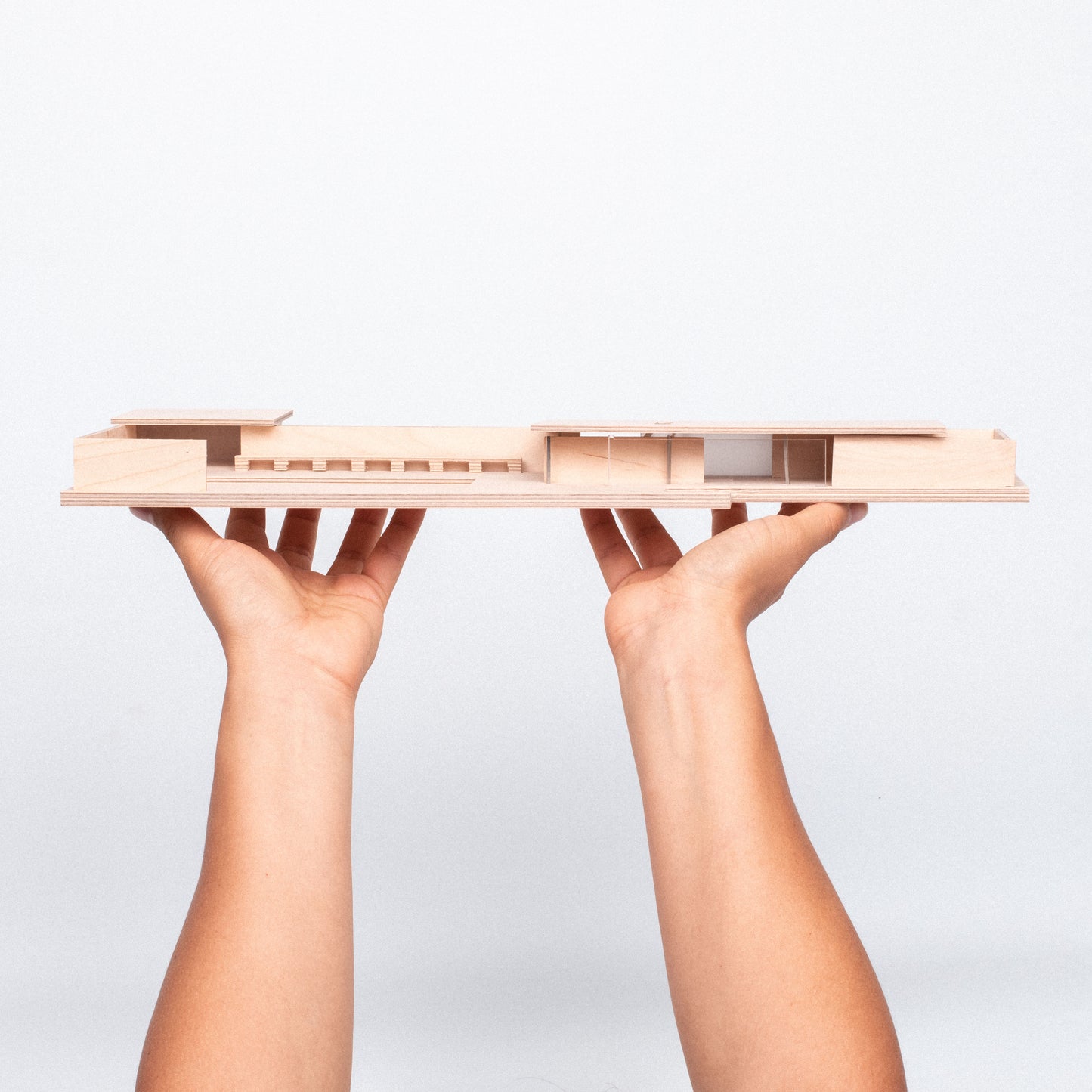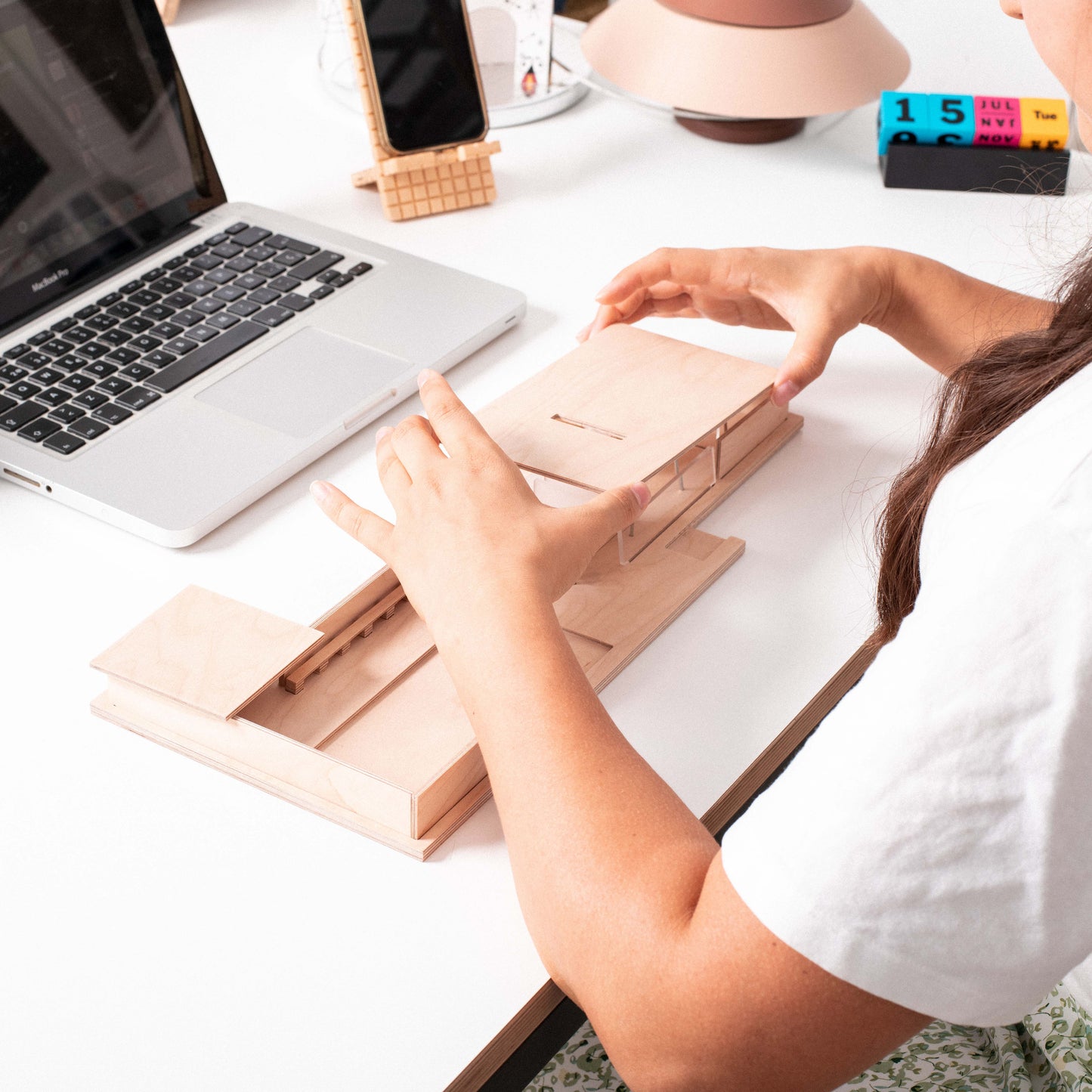beamalevich
Mies Barcelona | Pavilion Maquette 1:150
Couldn't load pickup availability
Fundació Mies Barcelona Pavilion DIY replica in 1:150 scale
A "do-it-yourself" model made with birch plywood, methacrylate, and steel, detailed and easy to assemble.
The Mies Barcelona Pavilion Model arrives unassembled, consisting of 19 pieces, and the user is responsible for constructing it step by step according to the instructions provided.
Ideal replica for architecture enthusiasts and admirers of Mies van der Rohe, suitable for display as a sculpture, artwork, or architectural ornament.
Specification
Dimensions:
H3 x W42 x L18.5 cm | 1.2 in x 16.5 in x 7.3 in
Weight: 673 g | 1.5 lb | 26.7 oz
Material: Birch Plywood, Acrylic, Steel
Scale: 1:150 (meaning: every 1 centimetre on the model equals 150 centimetres in real life)
Assembly instructions inside.
Not recommended for children under 3 years old as it contains small pieces.
This Product is Licensed in Collaboration with Fundació Mies van der Rohe.

